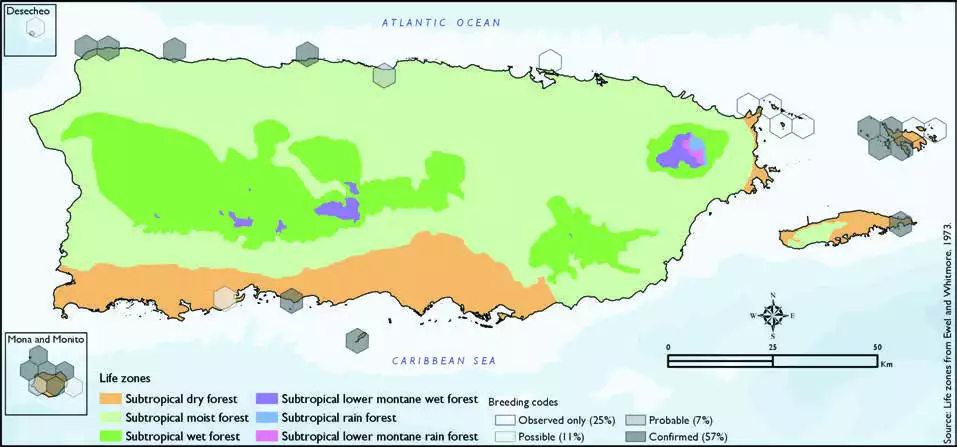White-tailed Tropicbird
Description
The white-tailed tropicbird (Phaethon lepturus) is a species of tropicbird. It is the smallest of three closely related seabirds of the tropical oceans and smallest member of the order Phaethontiformes. It is found in the tropical Atlantic, western Pacific and Indian Oceans. It also breeds on some Caribbean islands, and a few pairs have started nesting recently on Little Tobago, joining the red-billed tropicbird colony. In addition to the tropical Atlantic, it nests as far north as Bermuda, where it is locally called a "longtail".
Distribution & Habitat
The White-tailed Tropicbird occurs in tropical and subtropical
oceans of the world (Oberle
2018, Raffaele and others 1998).
It is a locally common breeding
resident in the West Indies,
especially from March to June
(Raffaele and others 1998),
although birds actually start arriving in late December and
are already in breeding mode
by January. It has declined
dramatically in recent centuries
on Puerto Rico, as it once nested
on cliffs of the southwestern and
northern coasts of the mainland
and is now restricted mostly
to the northwestern coast as
well as Culebra and associated
cays (Schaffner 1991), Caja de
Muerto, and Mona and Monito
islands (Biaggi 1997, Kepler
1978, Oberle 2018). However, it
is also present near Desecheo
(Biaggi 1997), and on Vieques
it is considered rare in spring
and summer, and extremely
rare in winter (Gemmill 2015).
It is regularly seen around the cliffs between the municipalities
of Isabela and Barceloneta,
especially near Guajataca (Oberle
2018). It usually occurs far out
at sea, except when visiting
sea cliffs for nesting (Raffaele
and others 1998). The atlas
fieldwork yielded a total of 45
records within 28 hexagons or 6
percent of the 479 total hexagons
(see map). Of the 28 hexagons
where this species was found,
breeding met the atlas definition
of confirmed in 57 percent (16)
of the hexagons, probable in 7
percent (2), and possible in 11
percent (3), while the species
was observed in 25 percent (7)
of the hexagons but without
evidence of breeding (see map).White-tailed Tropicbird distribution. The map shows the highest breeding code by hexagon and overlaying the ecological life zones
in Puerto Rico. Note: percentages may not total 100 due to rounding. 129White-tailed Tropicbird/Chirre Coliblanco

Breeding Habits
Previously published reports indicate that the White-tailed
Tropicbird breeds primarily
from March to July (Raffaele
and others 1998). This species
nesting is now mostly restricted
to rocky crevices and bare ledges
on sea cliffs or talus slopes
(Oberle 2018, Raffaele and others
1998, Schaffner 1991). Atlas
results show that this species
breeds from February to July
with the most breeding activity
during the months of March and
April (see chart). The breeding activity peaks in April, and it
mostly takes place within the
subtropical dry forest life zone
(see chart). Results show that this
species breeds in coastal areas
mostly within the subtropical
dry forest life zone (76 percent
of the hexagons) (see table) but
also within the subtropical moist
forest life zone (24 percent of the
hexagons) (see table and map).
Conservation
The current global population trend of the White-tailed
Tropicbird is suspected to be in decline due to predation
by invasive species (BirdLife
International 2018). Nonetheless,
it is currently listed as a species
of least concern by the IUCN
(BirdLife International 2018).
Locally, this species is not
listed in any of the threatened
categories of PRDNER and
USFWS. In Puerto Rico, the
White-tailed Tropicbird has a
protected habitat in land of 18
percent or 89 km2 of the total area covered by the hexagons
where evidence of breeding was
found for this species (503 km2).
Related Species
Family:
tropicbird